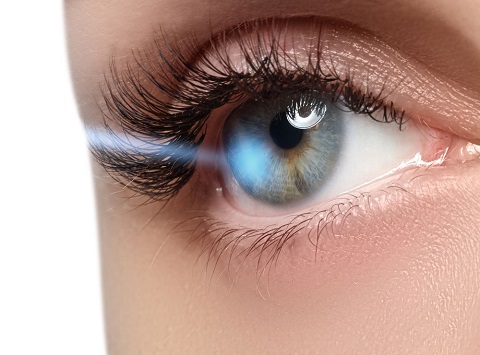
Around 90 percent of the information that the brain receives is delivered by the eyes. This means you owe to your eyes much of your knowledge of the world around you. The eyes are the fastest-moving and somehow the most extensively used organs in the body. So it’s only right that you take good care of your eyes at all times.
How the Eyes Work
When light hits an object, it is either absorbed or reflected. Absorbed light stays within the object, while reflected light is scattered in all directions. There are only a handful objects in the universe that do not reflect light, such as the black hole. Everything else does. When the light reflected by the object reaches the eye, visualization takes place.
 The reflected light enters the eye through the cornea and is filtered by the pupil to eliminate excess light that could harm the retina. Photosensitive cells within the retina send information about the light they received to the brain.
The reflected light enters the eye through the cornea and is filtered by the pupil to eliminate excess light that could harm the retina. Photosensitive cells within the retina send information about the light they received to the brain.
Refractive Error
The kind and quality of images that the brain will come up with throughout the process depends on the manner by which the information is delivered. Unfortunately, information delivery may not always be effective, as there are certain factors that can affect the transition of reflected light from the cornea to the retina.
Generally, light has to be properly focused on the retina to produce quality images. When something gets in the way, such as irregularities in the length and shape of the eye, the quality of vision will be affected. These irregularities are as one referred to as refractive error.
Types of Refractive Error
There are four main types of refractive error:
- Myopia, more commonly known as nearsightedness, is a condition characterized by the slight elongation of the eyeball, which prevents light from focusing directly on the retina, as it focuses light in front of it. As a result, closer objects appear clearly, while distant objects appear blurry. The initial signs of myopia include headache, eyestrain, and squinting. To more accurately diagnose this condition, people are advised to visit an eye care professional and undergo a comprehensive dilated eye exam.
- Hyperopia, more commonly known as farsightedness, is the opposite of myopia in that incoming light is focused behind the retina instead of on the retina itself. In effect, distant objects appear clearer than closer objects. In some cases, however, farsighted people see objects hazily regardless of the distance. Like myopia, it affects both children and adults. Furthermore, those whose parents are farsighted are also at risk of suffering from hyperopia.
- Astigmatism occurs when the cornea or lens is irregularly shaped, directing light elsewhere instead of to the retina. As a result, images appear blurry and stretched out. This condition usually occurs with myopia and hyperopia, which is why most optometric exams include it regardless of the possible cause of eye problem.
- Presbyopia is the weakening of vision as a result of aging. When a person is still young, the lens of his is still capable of adjusting its shape to allow the eye to focus on close objects. Because of this, objects appear blurry regardless of whether they are near or far.
Treating Refractive Error
There are only two ways to treat refractive error—corrective lenses (eyeglasses or contact lenses) and surgery. Many people prefer corrective lenses because they are cheaper. Unfortunately, there are a number of downsides to wearing eyeglasses or contact lenses.
For one, eyeglasses may not be suitable for certain types of work, such as firefighting. They are also easy to fog up in humid and cold environments so those whose jobs involve encounters with steam or staying long periods in frigid spaces may not benefit much from eyeglasses. Contact lenses, on the other hand, are quite complex and inconvenient to clean and disinfect.
Laser-Assisted In Situ Keratomileusis
A more effective alternative to the traditional corrective lenses, LASIK is a surgery that involves the use of laser to fix the irregularities in the structure of the eye that cause blurriness in vision. Numbing drops are applied on the eye to be operated, then a flap is created to expose the cornea’s stroma layer. Then an excimer laser is used to reshape and correct the stroma layer.
The result of LASIK is permanent. Like any other treatment methods, it involves certain risks, which are of course manageable. If you are looking to use this procedure to treat your refractive error, make sure to have an in-depth consultation with your eye doctor to know if you are a candidate. LASIK surgeons in Los Angeles will normally walk patients through the procedure to ensure that they know all the risks and benefits.



